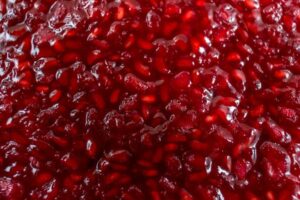
Gibberellic acid is a naturally occurring growth hormone that can be used to stimulate the growth of plants. It is especially beneficial for plants that are struggling to thrive or are growing too slowly.
Applying gibberellic acid to a peace lily can help to promote healthy growth and development of the plant. When using gibberellic acid on a peace lily, it is important to follow the instructions carefully and use the right concentration for the plant.
First, mix the gibberellic acid solution with water at a rate of 1 milliliter per liter of water. Then, water the peace lily with the gibberellic acid solution, making sure to soak the soil all the way through. The peace lily should be watered with the solution once every two weeks for maximum results. With proper application, the peace lily should show signs of improved growth and health within a few weeks.
What is Gibberellic Acid?
Gibberellic acid is a hormone produced naturally in plants, and is vital for a variety of processes, including germination, stem elongation, flowering, and fruit development.
This plant hormone is known to influence the growth of plants as it helps cells to expand and divide, resulting in increased cell size, and ultimately, plant growth. It also plays a role in the development of seedless fruit and in the production of auxins, which help regulate the growth and development of a plant.
Gibberellic acid can also be used as a pesticide as it can help to suppress the growth of certain weeds and fungi.
Benefits of Using Gibberellic Acid on Peace Lily
Gibberellic acid (GA) is a plant hormone that promotes growth and influences various developmental processes, including seed germination, stem elongation, and flowering. It has been used in the cultivation of a wide range of plants, including the peace lily (Spathiphyllum spp.).
When applied to the peace lily, the following benefits can be expected:
- Enhanced Growth: Gibberellic acid encourages cell division and elongation, which can lead to increased growth rate in peace lilies. This could result in larger leaves and overall size of the plant.
- Promotes Flowering: One of the main reasons GA is used in horticulture is its ability to stimulate flowering. If your peace lily is having trouble blooming, an application of gibberellic acid might encourage it to produce flowers.
- Seed Germination: If you’re propagating peace lilies from seeds, an application of GA can hasten the germination process. It breaks the dormancy of seeds and promotes early sprouting.
- Overcoming Stress: Gibberellic acid can help plants overcome periods of stress. If your peace lily is recovering from conditions like over-watering or under-watering, a cold spell, or transplant shock, GA may aid in its recovery.
- Longer Vase Life: For cut peace lilies, GA can extend the vase life of the flowers. It delays senescence, keeping the flowers fresh and vibrant for a longer period.
Remember that gibberellic acid is a potent hormone, and overuse can lead to overly tall, spindly plants or other growth abnormalities. Always follow the manufacturer’s instructions and use it sparingly.
Also, keep in mind that while GA can support plant health and growth, it’s not a substitute for proper care. Peace lilies need the right light conditions (indirect, bright light), consistent watering (but do not allow to become waterlogged), and regular feeding with a balanced fertilizer. These basic care needs should be met before turning to plant hormones for further assistance.
How to Prepare Gibberellic Acid for Use on Peace Lily
Gibberellic Acid is a naturally occurring plant hormone that can be used to stimulate growth and flowering in many plants, including the Peace Lily. Preparing and using Gibberellic Acid on your Peace Lily is a simple process, but requires some basic knowledge and understanding of the product. Firstly, Gibberellic Acid should be purchased in powder form.
Measure out the desired amount of powder, and dissolve it in a small amount of lukewarm water. This mixture can then be applied directly to the Peace Lily, either by spraying or by applying it with a brush.
Allow the plant to sit for a few days to allow the Gibberellic Acid to take effect. With just a few easy steps, you can use Gibberellic Acid to help your Peace Lily reach its full potential.

Application of Gibberellic Acid on Peace Lily
Gibberellic acid, or GA3, is an effective way to encourage growth in Peace Lily plants! This natural plant hormone helps stimulate cell division and elongation, resulting in increased stem and leaf growth.
When applied to the soil, Gibberellic acid is quickly absorbed and transported throughout the plant. With regular applications, you can expect to see an increase in foliage size, flowering, and overall plant health.
Whether you’re looking to revive ailing plants or just want to give your Peace Lily a boost, Gibberellic acid is the ideal solution!
Potential Hazards of Using Gibberellic Acid on Peace Lily
Gibberellic acid is a powerful plant hormone that can be used to promote growth and development in plants, but it can also be hazardous when used on plants such as peace lilies.
Gibberellic acid can cause a rapid growth spurt in plants, leading to weakened stems and a lack of adequate root support. This can cause the plant to become unstable and potentially topple over, leading to unintended damage or injury.
Furthermore, gibberellic acid can cause an imbalance in other plant hormones, leading to a distorted plant structure and a lack of flowering. As such, it is important to exercise caution when using gibberellic acid on peace lily plants, particularly since the risks may outweigh the rewards.
Troubleshooting Advice for Using Gibberellic Acid on Peace Lily
Gibberellic acid is an important tool for growers seeking to increase the size of their Peace Lily plants. While this powerful growth hormone can be a great help in improving the vigor of your plants, it can also be difficult to use properly.
If you are having trouble getting your Gibberellic Acid to take effect, here are some tips for troubleshooting your application. Start by checking your dosage – too much, or too little, can prevent Gibberellic Acid from working properly. Make sure the plant is in an environment with the correct temperature and humidity levels, as these can affect the effectiveness of the hormone.
If you’re still having trouble, try applying the acid to a different part of the plant – the leaves, stem, or roots. If all else fails, consider seeking advice from an experienced grower – they’ll be able to recommend the best Gibberellic Acid application method for your Peace Lily.
FAQs About the How to Use Gibberellic Acid on Peace Lily
What is the best way to apply Gibberellic Acid to a Peace Lily?
Answer: For the best results, dilute the Gibberellic Acid in water according to the instructions on the product label. Then, use a spray bottle to apply the mixture to the leaves of the Peace Lily.
How often should I apply Gibberellic Acid to my Peace Lily?
Answer: For best results, apply the Gibberellic Acid to your Peace Lily once every two to four weeks.
Is Gibberellic Acid safe for my Peace Lily?
Answer: Yes, Gibberellic Acid is safe for use on Peace Lilies when used as directed. However, it is important to use the product as directed to avoid any potential harm to the plant.
Conclusion
Gibberellic acid can be an effective way to promote flowering in peace lily plants. The application of gibberellic acid should be done carefully and with the appropriate amount of dilution, as an excessive concentration can lead to poor flower production. It is also important to consider the environmental conditions such as temperature and light when using gibberellic acid as these can affect the amount of gibberellic acid needed for optimal results.







One Comment